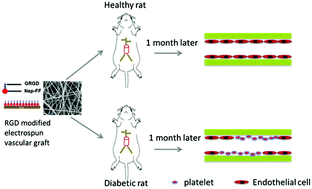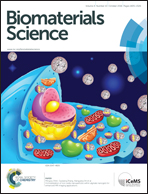Differences in the performance of PCL-based vascular grafts as abdominal aorta substitutes in healthy and diabetic rats
Abstract
Great progress has been made in the field of vascular tissue engineering, with some artificial vascular grafts already exhibiting promising outcomes in animal models. However, these studies were mostly conducted using healthy animals, which are not representative of actual clinical demands. Indeed, patients who require artificial vascular graft implantation are often accompanied by other comorbidities, such as hyperlipidaemia, hypertension and diabetes which should also be taken into consideration when assessing the potential of vascular grafts that are intended for clinical applications. In the present study, we established a rat model with type 2 diabetes (T2D) for performance evaluation of an electrospun PCL vascular graft. Our data showed that rats with T2D had elevated incidents of adverse event rates, including exacerbated platelet adhesion, inflammation, early calcification and impaired regeneration compared to the non-diabetic controls. Thus, we report that T2D exacerbates the regeneration process after in vivo implantation of vascular grafts. More advanced grafts are in demand for clinical use in patients with clinical complications such as T2D.


 Please wait while we load your content...
Please wait while we load your content...